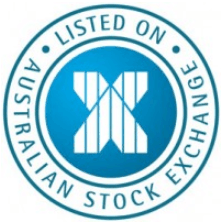
Chris Weston, Chief Market Strategist at IG Markets
Asia has capped off what has been a sensational month to be long Asian equities, although there are only modest signs of window dressing which seems confined to Australia and Japan.
Yesterday I wrote about the huge outperformance in July by Asian markets relative to many Western markets, and I continue to hold a favourable bias to this region. After market yesterday it was detailed that international investors were the biggest buyers of Korean equities on the day since September 2013, so this was case in point.
The ASX 200 has rounded off the month up 4.5%, the best monthly performance for the index since July 2013 when it put on 5.2% on the month. Certainly an attraction for international investors is the strength of the Aussie, which until yesterday was a pillar of strength and meant investors could pick up yield in the banking space and not have to hedge their currency exposure. A close below the June 18 low of 0.9321 may change that view though, with a move to the 200-day moving average at 0.9184 likely to be seen.
How the ASX 200 trades through August is obviously yet to be seen, but Australian earnings season will be in play and it will give investors a chance to get a much-needed reality check on whether the ASX 200 should be above 5600. It’s worth pointing out that August is generally a very good month to be long Aussie stocks, having rallied eight out of the last ten years by an average of 1.3%. The last two years have posted gains of 1.6% and 1.1% respectively, although the index in those years was trading on a forward-multiple of 15.1x and 11.8x respectively – not the 15.6x multiple that it currently trades on.
Perhaps there has been some caution seen today in Asia around the Argentina default that apparently isn’t a default. Certainly for anyone exposed to Argentina’s debt or have written credit-default swaps to the ‘vulture’ funds, this is absolutely a big deal. It’s an even bigger deal for Argentinian corporates as their ability to borrow in the capital markets will no doubt be affected and the costs of borrowing should increase even if the company is financially sound. However, judging by limited moves in US futures and gold in Asia, it seems the market feels this incident should be confined.
We have seen it time and time again in the last year that geo-politics and other various events have limited impact on assets in many developed markets and certain emerging markets, but is that time coming to an end, with the Federal Reserve taking one step closer to an end of QE and potentially changing its communication around lifting short-term rates?
Price action in the S&P 500 looking less compelling for the bulls
Price action in the S&P 500 is becoming far more neutral and sideways trade is being seen. European markets have already started heading lower, with the Eurostoxx 600 falling 4.7% from its June peak. This is also interesting as moves in the index would be having ramifications on the EUR as well. We know that international investors piled into European equities (and fixed income) through 2013 and 2014, taking advantage of the comparatively low valuations and increasingly easy stance from the ECB. However, for large parts of that period the EUR was fairly strong, which meant (for an international investor) that pullbacks in their equity holding was partially mitigated by a stronger EUR. This time around things are different.
The Eurostoxx 600 index is falling, with EUR/USD dropping in alignment, which in turn is making international investors nervous. A hit on two fronts is therefore occurring here, which of course is always a risk when buying international shares. Hedging this EUR exposure will likely be occurring and this would be extenuating the moves lower. This issue could continue playing out and thus the correlation between European indices and EUR/USD could increase, but if unsure it could be prudent to hedge when you can, not because the market forces you to do so.
EUR/USD oversold and under owned
Saying that EUR/USD is oversold and under-owned and looking at the daily chart you can see good buying support coming into the market, with yesterday’s candle printing a bullish hammer pattern. I am tempted by a tactical (albeit nimble) long position, although it is fighting a strong trend. A look at the USD basket (the EUR has a 57% weight) shows what a key juncture the USD is at right now, with price testing multi-year horizontal resistance.
It seems we are seeing a monumental shift in investor appetite for USDs. We are seeing that in the front-end of the yield curve, with the two-year treasury at the highest level since May 2011. Yesterday’s FOMC meeting was modestly more hawkish than the market was anticipating, and while Charles Plosser dissented it seems feasible that Dallas president Richard Fisher will likely do so as well, potentially September. The line in the statement that ‘a range of labor market indicators suggests that there remains significant underutilization of labor resources,’ highlgihts that traders really need to look not just at the unemployment rate, but also the U6 unemployment rate – this measures part-time workers as companies are preferring to employee part time rather than full time. This data point also comes out Friday, although there is no consensus.
The big event risk for me tonight is the US employee cost index (ECI) at 22:30 AEST. The market expects an increase of 0.5%, which would be in-line with the highest reading since December 2011. A number above here could really set the USD alight and push the USD index through key resistance around 81.50.